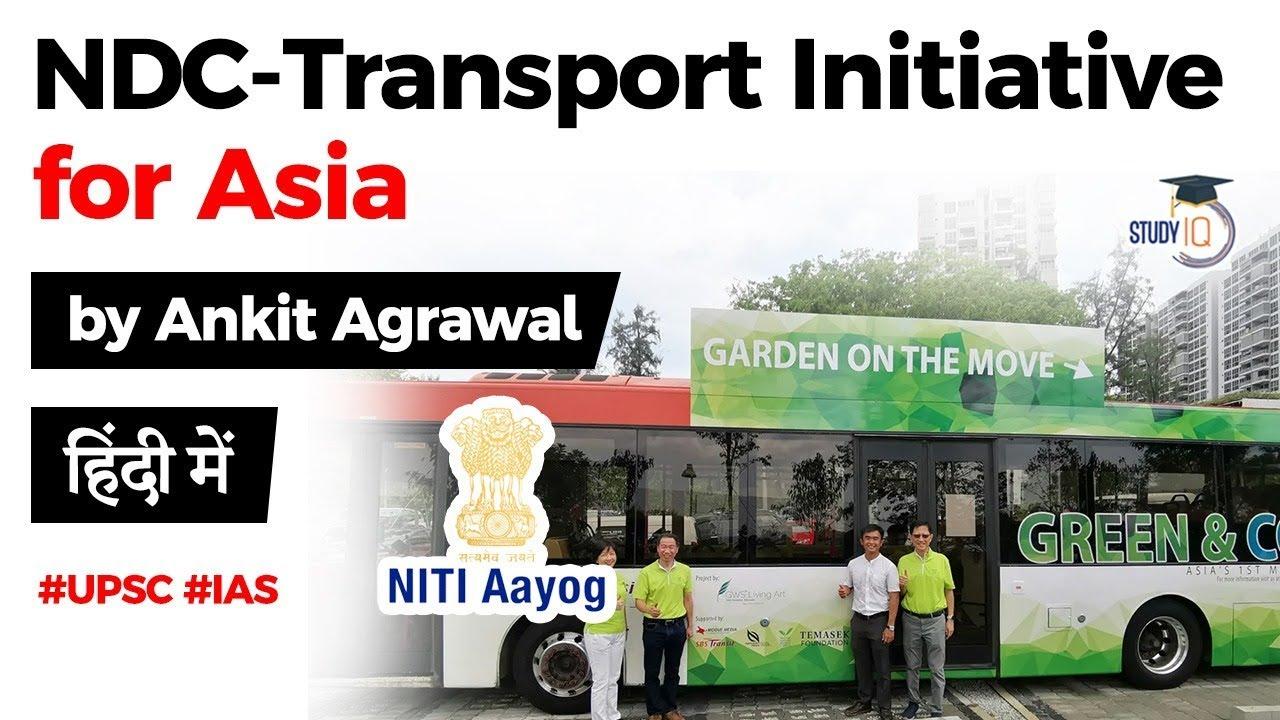Table of Contents
What is NDC-TIA?
- It is a regional initiative that aims to promote a comprehensive approach to decarbonize transport inIndia, Vietnam, and China.
- The NDC Transport Initiative for Asia (NDC-TIA) is-
- Joint program of WRI and eight other organizations that looks to enhance low carbon transport ambition and decarbonization targets in Asia.
- It is funded by the International Climate Initiative (IKI) of the German Ministry for the Environment, Nature Conservation and Nuclear Safety (BMU).
- The implementing organization is Deutsche Gesellschaft für Internationale Zusammenarbeit (GIZ) and partner institutions include-
- World Resources Institute (WRI),
- Ministry of Ecology and Environment of China,
- Ministry of Transport of Vietnam,
- National Institution for Transforming India (NITI Aayog),
- Agora Verkehrswende (AGORA),
- International Transport Forum (ITF),
- Partnership on Sustainable, Low Carbon Transport (SLoCaT),
- REN21 and International Council on Clean Transportation (ICCT).
- A global research non-profit organization established in 1982.
- WRI’s activities are focused on seven areas: food, forests, water, energy, cities, climate and ocean.
- It has a duration of 4 years.
Why this initiative?
- The transport sector accounts for 23% of the global energy-related CO₂ emissions.
- China’s transport sector alone generated 781 metric tons (Mt) of CO2e emissions in 2014.
- Together with India (231 Mt CO2e) and Vietnam
- (32 Mt CO2e), the three countries emitted about
- 1 metric gigaton of CO2e in 2014.
- Rapid economic growth combined with an ongoing urbanisation trend and increasing motorisation lead to a further increase in traffic in the three partner countries: China, India and Viet Nam.
- Business-as-usual forecasts for the three countries add up to 4 Giga tonnes of CO2 equivalent in 2030 and 3.8 Giga tonnes CO2 equivalent in 2050
- Asia is expected to cause about one third of the global CO2 emissions from transport in 2030.
- Therefore, the transition to a decarbonisation path for the transport sector in Asia is essential to achieve the goals of the Paris Climate Agreement for 2050.
So what is decarbonisation?
- Decarbonisation is the reduction of carbon dioxide emissions
- Through the use of low carbon power sources, achieving a lower output of greenhouse
- gasses into the atmosphere.
NDC–TIA India Component
- The NDC–TIA India Component will focus on-
- Establishing a multi-stakeholder dialogue platform for decarbonizing transport in India,
- Strengthening GHG and transport modelling capacities,
- Providing technical support on GHG emission reduction measures,
- Financing climate actions in transport,
- Offering policy recommendations on electric vehicle (EV) demand and supply policies,
- Evaluating business models through cost-benefit analyses and so forth.
Benefits
- Promotion of electric mobility.
- Promotion of electric vehicle charging infrastructure.
Latest Burning Issues | Free PDF























 WhatsApp
WhatsApp